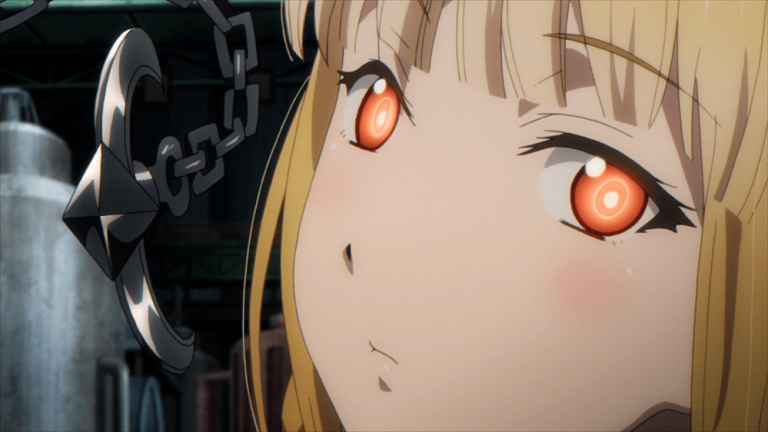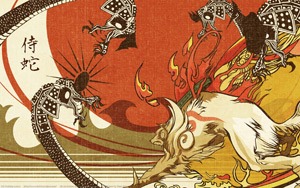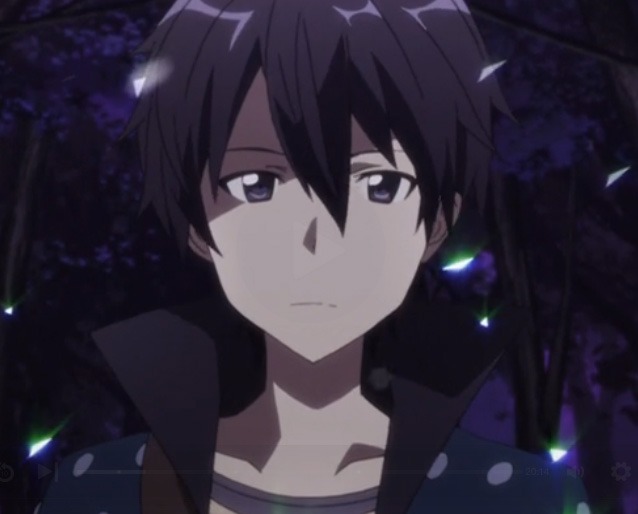
Darwin’s Game reverses the isekai premise: it brings the game into the real world. Kaname Sudo stumbles into the death game blindly and must learn how to survive. The game pits people into death battles against each other for points and rank. Points and rank can be cashed in for real-world money or weapons from the gacha shop. The app somehow teleports the order to the player no matter the location.
The game assigns each player a special ability called a sigil. Most are for combat but a few offer other advantages, such as the ability to detect lies. Kaname’s sigil offers a rare power that he, unfortunately, doesn’t explore as far as he could have. He can recreate most weapons and tools he has touched. In his defense, he doesn’t have much time with how quickly plotted the story is. He eventually joins up with other players and uses the game’s clan or guild feature to increase his survival chances.

He develops a love interest with another d-game player, as the players call it: Shuka Karino. Shuka and Kaname have an interesting dynamic to their relationship. Shuka comes to like Kaname and pushes their relationship forward. Yet she also wants him to take the dominate lead at times too. The give and take, considering their life-or-death situation, is indirect but still appears during their fights. The fan-service surrounding her, particularly soon after their first encounter, is contrived. Thankfully, it’s an isolated incident and it serves to point to her character and situation. Namely, Shuka has a deep need for connection because of her past, yet saw only Kaname (who really hadn’t justified her trust at that point) as worthy of being let inside her life. This is a common storytelling fault with anime. This story needs better development but at least their relationship seems to progress.
As you can guess, violence suffices Darwin’s Game. The violence comes fast after lulls in ways that reminds me of Ghost in the Shell. At first, Netflix sensors the violence with black bars, but this soon disappears. The choice to censor the first episodes and not the others struck me as strange, but after a point, censoring the violence would involve the entire screen going black. Censoring anything draws more attention to it. People who banned books learned this lesson the hard way. Besides, as violence goes, Darwin’s Game differs little from other violent anime. In fact, it’s fairly tame compared to the likes of Goblin Slayer.
Darwin’s Game touches on how the app and perhaps society covers up events that happen inside the game. For example, when a building collapses because of the fighting among the players, news reports claim terrorism. The anime suggests society is in on the game. Police officers are killed in the crossfire between sigil-enhanced players, players disappear when killed or lose certain matches, yet nothing comes of it. People don’t suspect anything or file missing persons reports. Of course, the anime could just overlook this problem for the sake of brevity. However, this plot hole can suggest, along with the casino the series briefly shows, that upper-class society supports the game. Darwin’s Game offers strong Hunger Games vibes to it.

The first season sets up for a longer run series that I hope will see more production. Darwin’s Game features characters who mostly think ahead and plan and counter-plan to survive their enemies. Yet they also recognize the true enemy is the game itself. The animation needs some work, however. It’s uneven in quality. Some actions scenes have nice, snappy animation. Others fall back to action lines and pans over stills. Granted, budgets remain limited, but the clashes make the anime feel inconsistent. Darwin’s Game offers an interesting take on augmented reality and makes our self-destructive relationship with technology obvious. People kill each other for money, for points and prestige. While people don’t do that in reality, the Internet teems with people trying to one-up each other in how much of a fan or how knowledgeable or “leet” they are. In the end, it becomes a race to the bottom. In Darwin’s Game the race to the bottom problem becomes apparent when ends justify the means for the characters. Brutality becomes a way of life for even Kaname.
The story could do more to explore how the violence wears on their psychology. There’s hints in the characters’ behavior, but the villains do a better job at describing how a violent life can break people’s mental health. Of course, 12 episodes isn’t a lot of time for development. Perhaps a second season will delve into the psychology of these hardened killers. And that’s the interesting aspect of the story, the protagonists are just as terrible as the villains. They mutilate and kill just the same as the villains do. Only the motivation differs. The story doesn’t address this; it treats this as a matter of fact. While I like how it doesn’t overtly address the violence, for some people, the problem won’t be apparent. I’ve noticed many people need ideas pointed to them. Otherwise, they won’t get the idea. Despite the accolades give to The Legend of Zelda: Breath of the Wild, the story was lambasted when it released for a similar reason. People didn’t see the depth of storytelling it was trying to show. Of course, just as many did.
In any case, if you like a good suspense story or want an isekai with a twist, give Darwin’s Game a watch.



